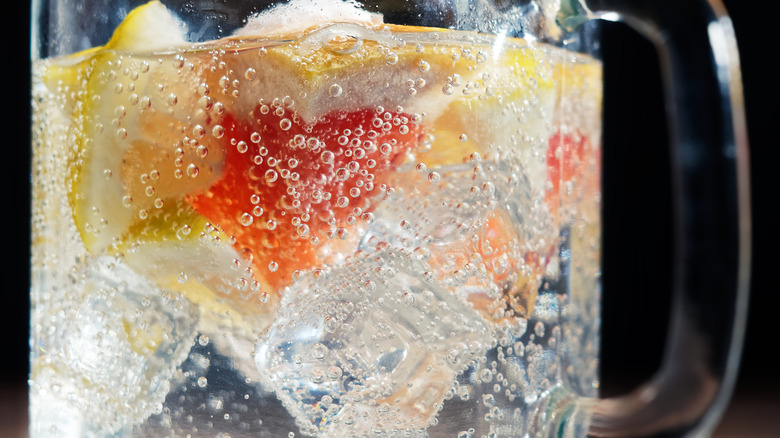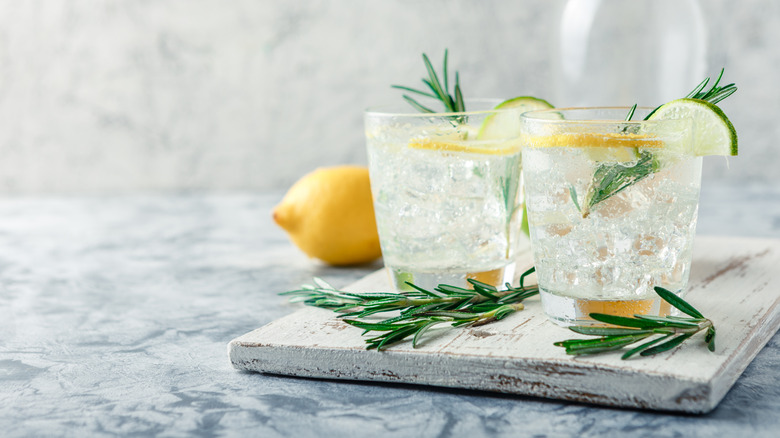How Carbonation Plays An Important Role When Pouring Cocktails
Building a successful cocktail is a delicate art. It's all about balance, and like any balancing act, one wrong step can throw off the whole thing. With this in mind, the order in which you assemble your ingredients matters, and it can make a big difference for your finished drink.
It all goes into the shaker anyway... right? Sometimes. When crafting a punchy, spirit-forward cocktail like a Negroni or a Manhattan, all the ingredients exist within the same realm (liquor) so pour order doesn't really matter. However, when you're crafting a sparkling cocktail, it's a different story entirely. The highball, for instance, is the classic two-parter of a spirit and soda water, with the liquor being topped by the carbonated element. But, soda water doesn't actually taste like anything — carbonation is its own ingredient. It's the "spritz" in an Aperol Spritz. This serves to illustrate how important fizziness is in creating depth and dimension, but carbonation is just as important when the fizzy mixer does have a flavor. A mimosa is prosecco poured on top of orange juice. A French 75 is champagne poured on top of gin, lemon juice, and simple syrup.
Basically, every time you make a sparkling bevy, the carbonated ingredient gets added to the glass at the very end as a bubbly finishing touch. Pouring the soda water or sparkling wine into the glass last keeps the mouthfeel light and airy.
Even the humble G&T is a miracle of science
Scientifically speaking, carbonation is the forced addition of carbon dioxide gas into a liquid beverage. It helps prevent spoilage, adds an effervescent visual, and makes drinks taste better. The pleasant tingly feeling makes the palate enjoy a drink more and also amplifies the nose's perception of aroma. Plus, when carbon dioxide and water meet, it creates carbonic acid, which gives drinks a slight acidity. Carbonation actually triggers the same TRPA1 pain receptors that get triggered by spicy foods, and the same "pain and pleasure" reaction goes off in the brain. That's why folks have tried to chase the dragon with carbonation devices like the SodaStream, CO2 charger, and carbonation rig. Carbonation also makes sippers more accessible to the palate, like the bitter Campari in an Americano cocktail.
Make no mistake, a carbonated mixer never belongs in your cocktail shaker. This'll shake all the bubbles out and leave you with a tragically flat drink. (They aren't great for batching, either.) As such, all the dilution in a fizzy cocktail should come from water, syrup, or juices. If you need a little extra incorporation, stir your drink gently with a long-handled bar spoon.
The shape of the glass you use substantially affects how long your cocktail will retain its fizziness. It's the reason why bubbly champagne is served in a slim, narrow-mouthed flute. Steer clear of wider coupe or Nick & Nora glasses for carbonated cocktails.

